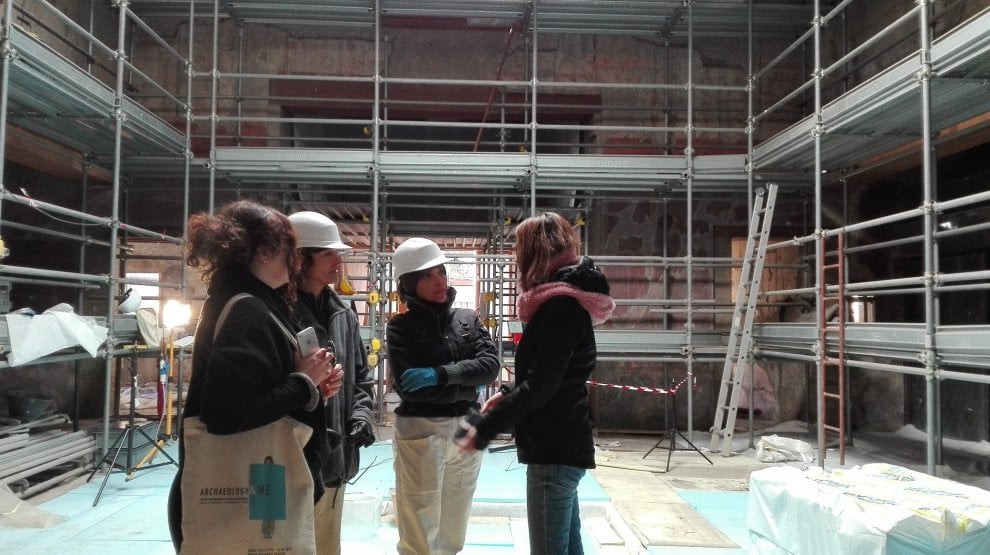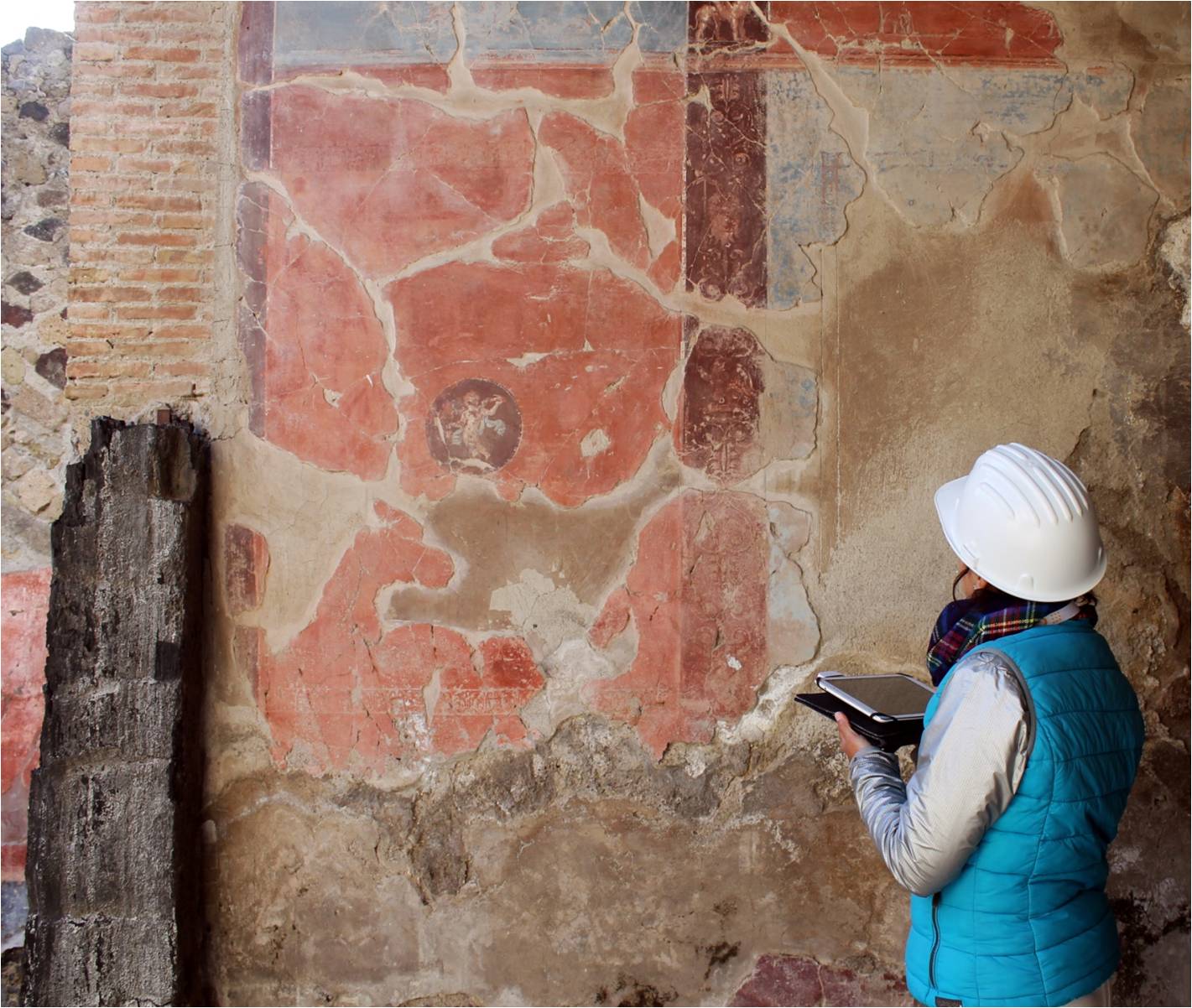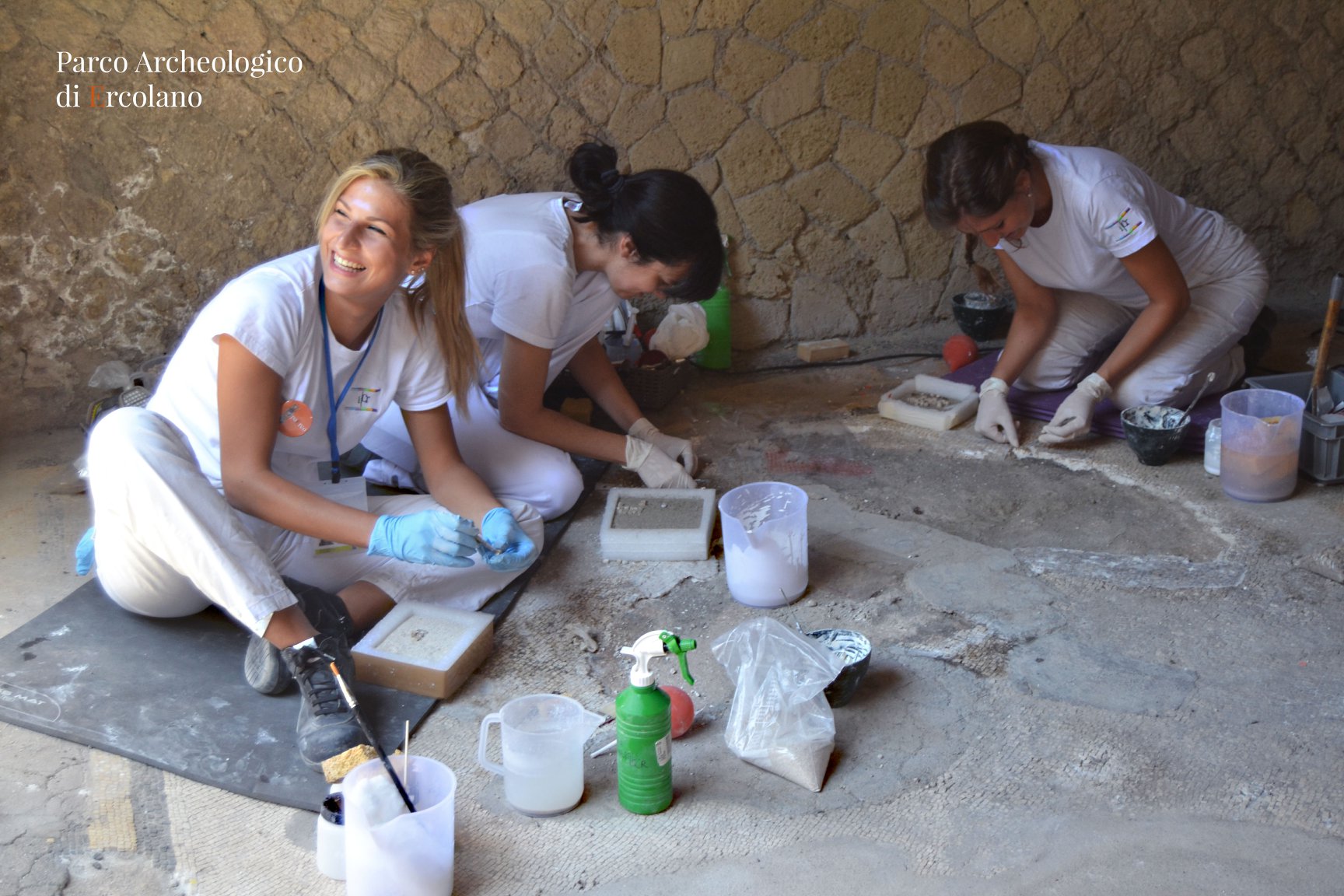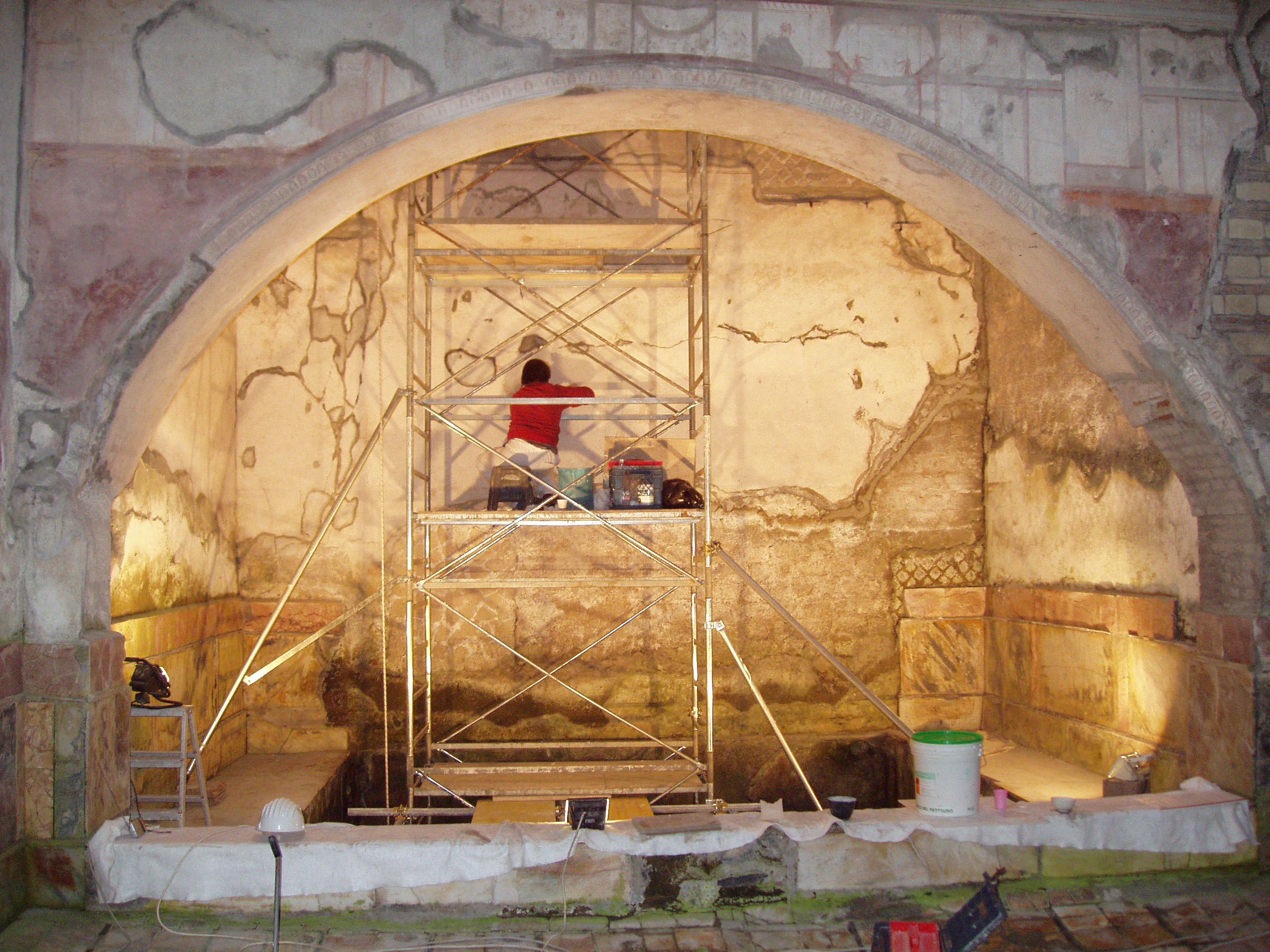




The nature of Herculaneum’s burial 2000 years ago meant that open-air excavation in the early 20th c. revealed an extraordinary level of preservation of the Roman town but had to be accompanied by the stabilization of these multistorey ruins, and the reinstatement of roads and drainage systems. The site today requires conservation of the archaeological fabric but also of these aging restoration interventions, and at an urban scale.
However, efforts at Herculaneum in the late 20th c. approached the site as a series of individual elements. This was partly due to limited access to interdisciplinary expertise and steady funding sources – sporadic capital funding for one-off localised projects predominated.
With the turn of the millennium, a new approach was taken that mapped conservation issues and interdependencies between them across the entire site, and acted on them. Initial efforts focused on resolving situations in areas at risk of collapse or with vulnerable decorative features. Over time the focus shifted to long-term strategies for reducing the causes of decay and developing site-wide maintenance cycles sustainable by the public authority alone so that the site would not revert back. With these now entirely sustained by the public partner the overarching objective has been achieved.
Developments in Italian legal frameworks in 2004 allowed the private partner to contract conservation works directly and ‘donate’ concrete results, instead of financial support only. This allowed the partnership to constitute genuine operational enhancement of the existing management system.
Further legal reforms for cultural heritage in the period 2014-2016 then enhanced the public partners’ flexibility and responsiveness to the site’s needs.
- Interdisciplinary analysis and decision-making for large heritage sites can be enhanced through the use of user-led data management tools. Integrating interdisciplinary IT tools in conservation planning, implementation and monitoring was crucial to greater effectiveness in the use of limited resources; human, financial and intellectual.
- The long timeframes available for the partnership and the year-round presence of an interdisciplinary team allowed the development of a comprehensive and nuanced understanding of the site’s needs, and extensive testing of long-term strategies to address them, before handing over maintenance regimes to the public heritage authority.
- Extensive and problematic 20th c. restoration interventions are a challenge faced by a lot of built heritage where more knowledge sharing is desirable.
- The Covid-19 pandemic has exposed the financial vulnerability of the institutional model in the absence of ticketing income and uncertainties regarding the capacity of the public partner to sustain the improvements to site conservation and maintenance in the long term.